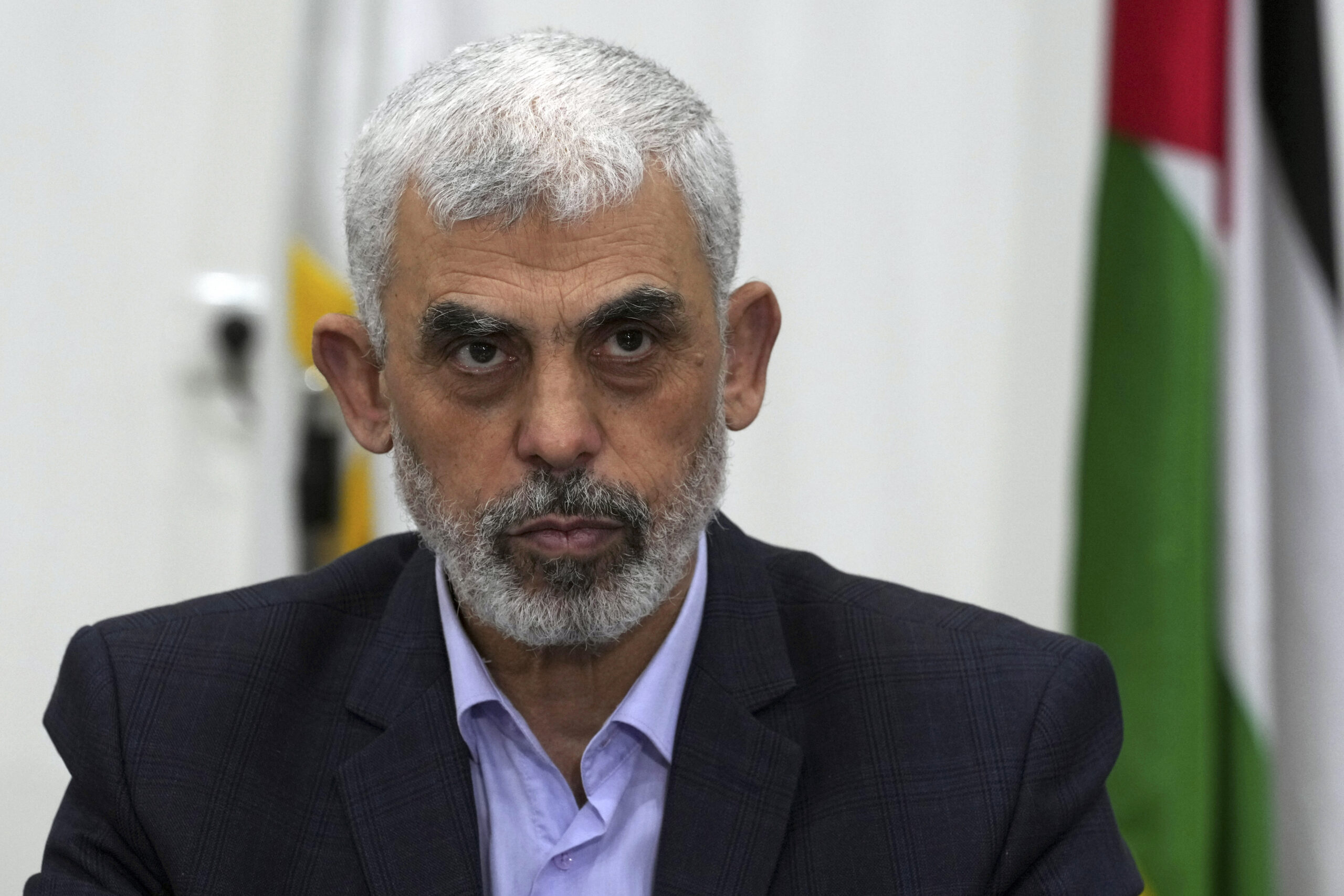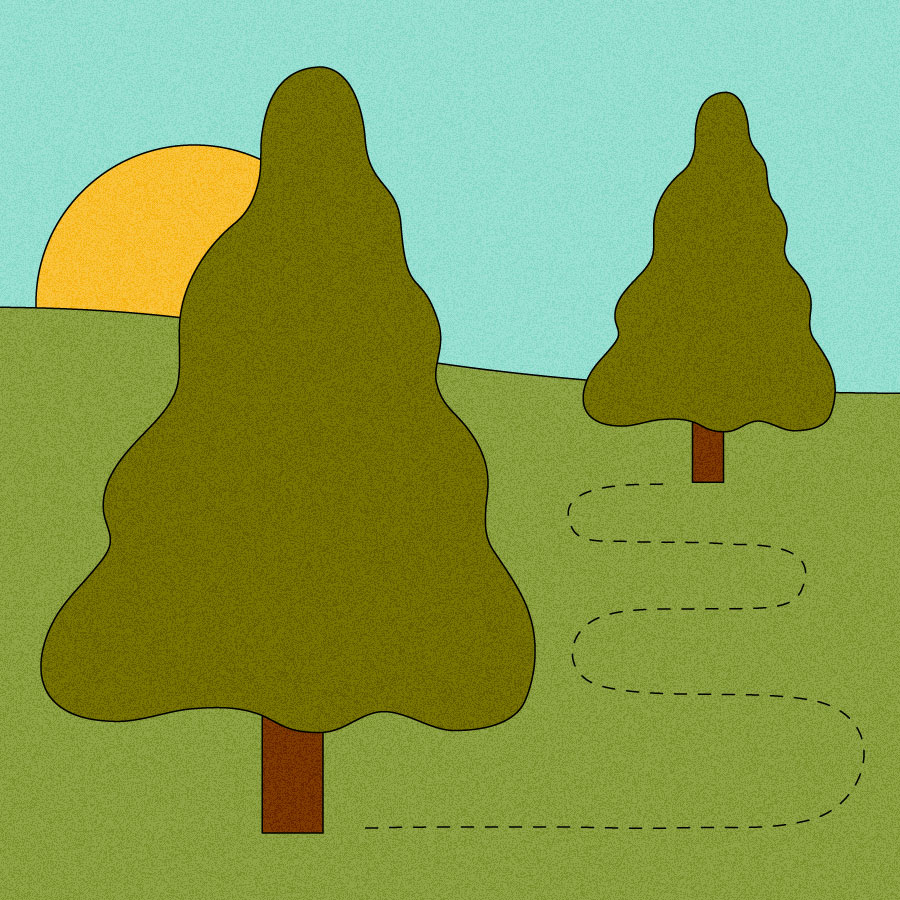This content originally appeared on Radio Free Asia and was authored by Radio Free Asia.
This post was originally published on Radio Free.
This content originally appeared on Radio Free Asia and was authored by Radio Free Asia.
This post was originally published on Radio Free.
This content originally appeared on Human Rights Watch and was authored by Human Rights Watch.
This post was originally published on Radio Free.
This content originally appeared on Radio Free Asia and was authored by Radio Free Asia.
This post was originally published on Radio Free.
Mexico City, October 18, 2024—CPJ is highly concerned after unidentified attackers fired at the offices of the El Debate newspaper at 11 p.m. on October 17, in Culiacán, the capital of the northern Mexican state of Sinaloa. No one was hurt; the building’s facade, two outlet cars, and two staff members’ personal vehicles were damaged in the attack.
“The brazen shooting at the offices of El Debate not only underscores the ongoing crisis of violence against the press in Mexico but is a stark reminder of the urgent need for the recently appointed government of President Claudia Sheinbaum to investigate this attack and take all appropriate steps to provide El Debate’s staff with protection,” said Jan-Albert Hootsen, CPJ’s Mexico representative. “As long as authorities continue to stand by, impunity in crimes against the press will continue to be the norm, and any pretense of respect for press freedom will ring hollow.”
El Debate is one of Culiacán’s oldest and most widely circulated regional dailies and has extensively reported on the rising criminal violence in the state.
The Institute for Protection of Human Rights Defenders and Journalists, which operates under supervision of the Sinaloa state government, and Sinaloa Governor Rubén Rocha Moya condemned the attack in separate statements on Friday. Moya also ordered an investigation.
CPJ’s several calls to El Debate and the state public prosecutor’s office (FGE) requesting comment about the investigation were not answered.
An official who spoke to CPJ on the condition of anonymity, as they are not authorized to speak publicly on the matter, said the Federal Mechanism for the Protection of Human Rights Defenders and Journalists, which operates under supervision of the federal Interior Ministry in Mexico City, is establishing contact with the newspaper and Sinaloa state authorities to evaluate the need for state-sponsored protection.
This content originally appeared on Committee to Protect Journalists and was authored by CPJ Staff.
This post was originally published on Radio Free.
Comprehensive coverage of the day’s news with a focus on war and peace; social, environmental and economic justice.
Hezbollah prepared for escalation in fighting with Israel in wake of Sinwar’s death.
UNIFIL Peacekeepers to hold its positions in southern Lebanon despite attacks by Israel.
The post The Pacifica Evening News, Weekdays – October 18, 2024 appeared first on KPFA.
This content originally appeared on KPFA – The Pacifica Evening News, Weekdays and was authored by KPFA.
This post was originally published on Radio Free.
This content originally appeared on Laura Flanders & Friends and was authored by Laura Flanders & Friends.
This post was originally published on Radio Free.
This content originally appeared on Democracy Now! and was authored by Democracy Now!.
This post was originally published on Radio Free.
This content originally appeared on Radio Free Asia and was authored by Radio Free Asia.
This post was originally published on Radio Free.

Tributes have poured in from across the globe for 19-year-old Sha’ban al-Dalou, a software engineering student who burned to death after Israel bombed Gaza’s Al-Aqsa Hospital in central Deir al-Balah on Monday. Photographs and footage of his final moments shocked millions around the world as Sha’ban laid in a hospital bed with an IV attached to his arm as the flames engulfed him. His mother and youngest brother have also reportedly succumbed to their burns, and his two sisters are on the verge of dying from their injuries. “Another family is going to be wiped off the civil record,” says Abubaker Abed, a 21-year-old journalist reporting live from outside the Al-Aqsa Hospital who interviewed al-Dalou’s family and friends. Abed once dreamed of becoming a football commentator and is struggling to find food and supplies while Israel enacts a near-complete siege on Gaza. “We are young men that have nothing to do with this war. … But we are very daily being subjected to sheer violence and brutality,” says Abed. “I could be the next Sha’ban. Anyone could be the next Sha’ban, because Israel is allowed to do anything.”
This content originally appeared on Democracy Now! and was authored by Democracy Now!.
This post was originally published on Radio Free.

Tributes have poured in from across the globe for 19-year-old Sha’ban al-Dalou, a software engineering student who burned to death after Israel bombed Gaza’s Al-Aqsa Hospital in central Deir al-Balah on Monday. Photographs and footage of his final moments shocked millions around the world as Sha’ban laid in a hospital bed with an IV attached to his arm as the flames engulfed him. His mother and youngest brother have also reportedly succumbed to their burns, and his two sisters are on the verge of dying from their injuries. “Another family is going to be wiped off the civil record,” says Abubaker Abed, a 21-year-old journalist reporting live from outside the Al-Aqsa Hospital who interviewed al-Dalou’s family and friends. Abed once dreamed of becoming a football commentator and is struggling to find food and supplies while Israel enacts a near-complete siege on Gaza. “We are young men that have nothing to do with this war. … But we are very daily being subjected to sheer violence and brutality,” says Abed. “I could be the next Sha’ban. Anyone could be the next Sha’ban, because Israel is allowed to do anything.”
This content originally appeared on Democracy Now! and was authored by Democracy Now!.
This post was originally published on Radio Free.
This content originally appeared on Radio Free Asia and was authored by Radio Free Asia.
This content originally appeared on International Rescue Committee and was authored by International Rescue Committee.
This post was originally published on Radio Free.
Comprehensive coverage of the day’s news with a focus on war and peace; social, environmental and economic justice.

Yahya Sinwar, head of Hamas in Gaza, chairs a meeting with leaders of Palestinian factions at his office in Gaza City, on April 13, 2022. (AP Photo/Adel Hana, File)
The post The Israeli military confirms killing Hamas leader Yahya Sinwar in Gaza battle – October 17, 2024 appeared first on KPFA.
This content originally appeared on KPFA – The Pacifica Evening News, Weekdays and was authored by KPFA.
This post was originally published on Radio Free.
This content originally appeared on The Progressive — A voice for peace, social justice, and the common good and was authored by Robert Davis.
This post was originally published on Radio Free.
This content originally appeared on The Real News Network and was authored by The Real News Network.
This post was originally published on Radio Free.
This content originally appeared on The Intercept and was authored by The Intercept.
This post was originally published on Radio Free.
This content originally appeared on Human Rights Watch and was authored by Human Rights Watch.
This post was originally published on Radio Free.
This content originally appeared on Democracy Now! and was authored by Democracy Now!.
This post was originally published on Radio Free.
Photo credit: Muhammad Mahdi Karim, Wikimedia Commons
Each new week brings new calamities for people in the countries neighboring Israel, as its leaders try to bomb their way to the promised land of an ever-expanding Greater Israel.
In Gaza, Israel appears to be launching its “Generals’ Plan” to drive the most devastated and traumatized 2.2 million people in the world into the southern half of their open-air prison. Under this plan, Israel would hand the northern half over to greedy developers and settlers who, after decades of U.S. encouragement, have become a dominant force in Israeli politics and society. The redoubled slaughter of those who cannot move or refuse to move south has already begun.
In Lebanon, millions are fleeing for their lives and thousands are being blown to pieces in a repeat of the first phase of the genocide in Gaza. For Israel’s leaders, every person killed or forced to flee and every demolished building in a neighboring country opens the way for future Israeli settlements. The people of Iran, Syria, Iraq, Jordan, Egypt and Saudi Arabia ask themselves which of them will be next.
Israel is not only attacking its neighbors. It is at war with the entire world. Israel is especially threatened when the governments of the world come together at the United Nations and in international courts to try to enforce the rule of international law, under which Israel is legally bound by the same rules that all countries have signed up to in the UN Charter and the Geneva Conventions.
In July, the International Court of Justice (ICJ) ruled that Israel’s occupation of Gaza, the West Bank and East Jerusalem since 1967 is illegal, and that it must withdraw its military forces and settlers from all those territories. In September, the UN General Assembly passed a resolution giving Israel one year to complete that withdrawal. If, as expected, Israel fails to comply, the UN Security Council or the General Assembly may take stronger measures, such as an international arms embargo, economic sanctions or even the use of force.
Now, amid the escalating violence of Israel’s latest bombing and invasion of Lebanon, Israel is attacking the UNIFIL UN peacekeeping force in Lebanon, whose thankless job is to monitor and mitigate the conflict between Israel and Hezbollah.
On October 10 and 11, Israeli forces fired on three UNIFIL positions in Lebanon. At least five peacekeepers were injured. UNIFIL also accused Israeli soldiers of deliberately firing at and disabling the monitoring cameras at its headquarters, before two Israeli tanks later drove through and destroyed its gates. On October 15, an Israeli tank fired at a UNIFIL watchtower in what it described as “direct and apparently deliberate fire on a UNIFIL position.” Deliberately targeting UN missions is a war crime.
This is far from the first time the soldiers of UNIFIL have come under attack by Israel. Since UNIFIL took up its positions in southern Lebanon in 1978, Israel has killed blue-helmeted UN peacekeepers from Ireland, Norway, Nepal, France, Finland, Austria and China.
The South Lebanon Army, Israel’s Christian militia proxy in Lebanon from 1984 to 2000, killed many more, and other Palestinian and Lebanese groups have also killed peacekeepers. Three hundred and thirty-seven UN peacekeepers from all over the world have given their lives trying to keep the peace in southern Lebanon, which is sovereign Lebanese territory and should not be subject to repeated invasions by Israel in the first place. UNIFIL has the worst death toll of any of the 52 peacekeeping missions conducted by the UN around the world since 1948.
Fifty countries currently contribute to the 10,000-strong UNIFIL peacekeeping mission, anchored by battalions from France, Ghana, India, Indonesia, Italy, Nepal and Spain. All those governments have strongly and unanimously condemned Israel’s latest attacks, and insisted that “such actions must stop immediately and should be adequately investigated.”
Israel’s assault on UN agencies is not confined to attacking its peacekeepers in Lebanon. The even more vulnerable, unarmed, civilian agency, UNRWA (UN Relief and Works Agency), is under even more vicious assault by Israel in Gaza. In the past year alone, Israel has killed a horrifying number of UNRWA workers, about 230, as it has bombed and fired at UNRWA schools, warehouses, aid convoys and UN personnel.
UNRWA was created in 1949 by the UN General Assembly to provide relief to some 700,000 Palestinian refugees after the 1948 “Nakba,” or catastrophe. The Zionist militias that later became the Israeli army violently expelled over 700,000 Palestinians from their homes and homeland, ignoring the UN partition plan and seizing by force much of the land the UN plan had allocated to form a Palestinian state.
When the UN recognized all that Zionist-occupied territory as the new state of Israel in 1949, Israel’s most aggressive and racist leaders concluded that they could get away with making and remaking their own borders by force, and that the world would not lift a finger to stop them. Emboldened by its growing military and diplomatic alliance with the United States, Israel has only expanded its territorial ambitions.
Netanyahu now brazenly stands before the whole world and displays maps of a Greater Israel that includes all the land it illegally occupies, while Israelis openly talk of annexing parts of Egypt, Jordan, Syria, Lebanon, Iraq and Saudi Arabia.
Dismantling UNRWA has been a long-standing Israeli goal. In 2017, Netanyahu accused the agency of inciting anti-Israeli sentiment. He blamed UNRWA for “perpetuating the Palestinian refugee problem” instead of solving it and called for it to be eliminated.
After October 7, 2023, Israel accused 12 of UNRWA’s 13,000 staff of being involved in Hamas’s attack on Israel. UNRWA immediately suspended those workers, and many countries suspended their funding of UNRWA. Since a UN report found that Israeli authorities had not provided “any supporting evidence” to back up their allegations, every country that funds UNRWA has restored its funding, with the sole exception of the United States.
Israel’s assault on the refugee agency has only continued. There are now three anti-UNRWA bills in the Israeli Knesset: one to ban the organization from operating in Israel; another to strip UNRWA’s staff of legal protections afforded to UN workers under Israeli law; and a third that would brand the agency as a terrorist organization. In addition, Israeli members of parliament are proposing legislation to confiscate UNRWA’s headquarters in Jerusalem and use the land for new settlements.
UN Secretary General Guterres warned that, if these bills become law and UNRWA is unable to deliver aid to the people of Gaza, “it would be a catastrophe in what is already an unmitigated disaster.”
 Israel’s relationship with the UN and the rest of the world is at a breaking point. When Netanyahu addressed the General Assembly in New York in September, he called the UN a “swamp of antisemitic bile.” But the UN is not an alien body from another planet. It is simply the nations of the world coming together to try to solve our most serious common problems, including the endless crisis that Israel is causing for its neighbors and, increasingly, for the whole world.
Israel’s relationship with the UN and the rest of the world is at a breaking point. When Netanyahu addressed the General Assembly in New York in September, he called the UN a “swamp of antisemitic bile.” But the UN is not an alien body from another planet. It is simply the nations of the world coming together to try to solve our most serious common problems, including the endless crisis that Israel is causing for its neighbors and, increasingly, for the whole world.
Now Israel wants to ban the secretary general of the UN from even entering the country. On October 1st, Israel invaded Lebanon, and Iran launched 180 missiles at Israel, in response to a whole series of Israeli attacks and assassinations. Secretary General Antonio Guterres put out a statement deploring the “broadening conflict in the Middle East,” but did not specifically mention Iran. Israel responded by declaring the UN Secretary General persona non grata in Israel, a new low in relations between Israel and UN officials.
Over the years, the U.S. has partnered with Israel in its attacks on the UN, using its veto in the Security Council 40 times to obstruct the world’s efforts to force Israel to comply with international law.
American obstruction offers no solution to this crisis. It can only fuel it, as the violence and chaos grows and spreads and the United States’ unconditional support for Israel gradually draws it into a more direct role in the conflict.
The rest of the world is looking on in horror, and many world leaders are making sincere efforts to activate the collective mechanisms of the UN system. These mechanisms were built, with American leadership, after the Second World War ended in 1945, so that the world would “never again” be consumed by world war and genocide.
A US arms embargo against Israel and an end to U.S. obstruction in the UN Security Council could tip the political balance of power in favor of the world’s collective efforts to resolve the crisis.
The post Israel’s War on the World first appeared on Dissident Voice.
This content originally appeared on Dissident Voice and was authored by Medea Benjamin and Nicolas J.S. Davies.
This post was originally published on Radio Free.

We get an update on Israel’s war on Lebanon from journalist Rania Abouzeid in Beirut. “We are seeing a definite escalation that started a month ago and doesn’t show any sign of letting up,” she observes, describing unrestrained attacks by Israel throughout the country, on all sectors of society, as Israel carries out its “Dahiya doctrine” in an attempt to foment division among the Lebanese population. “This is the Gaza playbook. … The sentiment here is that this is now a war on Lebanon,” Abouzeid says.
This content originally appeared on Democracy Now! and was authored by Democracy Now!.
This post was originally published on Radio Free.
This content originally appeared on Human Rights Watch and was authored by Human Rights Watch.
This post was originally published on Radio Free.
Read RFA coverage of this topic in Burmese.
Insurgent forces in eastern Myanmar captured a junta base close to the Thai border on Thursday morning, a Karen National Union spokesperson told Radio Free Asia.
The Karen National Liberation Army, or KNLA, attacked a junta camp near Kayin state’s Lay Kay Kaw village with heavy weapons, capturing prisoners and seizing weapons, Saw Taw Nee said.
The KNLA is the military wing of the Karen National Union. It is Myanmar’s oldest ethnic armed organization, fighting since the 1950s for autonomy and territory. Since 2021, when the country’s military seized power in a coup that toppled a democratically elected civilian administration, the KNLA has stepped up fighting for control of Kayin and Mon states in southeast Myanmar.

The junta base captured Thursday is only 14 kilometers (eight miles) from trade hub and border town Myawaddy, where KNLA forces briefly captured the Infantry Battalion 275 camp for two weeks in April before losing control to junta forces.
The Swe Taw Kone camp acts as a strategic stronghold to help junta forces retain their grip on Myawaddy, Saw Taw Nee said.
“According to the military, without the defense this camp provides for this important part of their territory, Myawaddy’s out in the open,” he said. “From this camp, junta forces have frequently fired at Thin Gan Nyi Naung and villages surrounding the Asian Highway, causing a lot of destruction and injuries.”
Out of the hundreds of soldiers stationed at the camp, many, including a commander, escaped during the attack, he said. The KNLA and its allies are working to track them down, capture them and clear the area.
Saw Taw Nee declined to comment on how many junta soldiers had been captured during the attack.
RELATED STORIES:
Myanmar’s coup leader touts peace on anniversary of failed ceasefire
Teen fighter pauses near Myawaddy to talk of decision to join rebels
Thailand to investigate financing of deals on arms for Myanmar
Swe Taw Kone was the main camp providing infantry support to the junta during the battles that took place near Myawaddy, he said, adding that it took allied KNLA forces more than three months to capture it.
The junta has not released any information about Swe Taw Kone and attempts by RFA to reach junta spokesperson Maj. Gen. Zaw Min Tun were unsuccessful.
The KNLA has warned allies and nearby residents of possible airstrikes, saying that junta planes have been scouting the area since it took the camp on Thursday morning.
Lay Kay Kaw village is the site of one of dozens of camps along the Thai-Myanmar border housing civilians displaced by flooding, raids, razed villages and airstrikes. The camp is one of several in the region that have been targeted in junta bombings.
Translated by Kiana Duncan. Edited by Mike Firn.
This content originally appeared on Radio Free Asia and was authored by By RFA Burmese.
This content originally appeared on Democracy Now! and was authored by Democracy Now!.
This post was originally published on Radio Free.
This content originally appeared on The Intercept and was authored by The Intercept.
This post was originally published on Radio Free.
This content originally appeared on The Real News Network and was authored by The Real News Network.
This post was originally published on Radio Free.

The old tree spoke:
Burr of blade and crash of trunk broke embraces held for centuries. My grove — seeded ere memory — found itself emptied of life by the sound and fury of saw.
Alone, I watched seasons grow erratic. Alone, I watched frost whip rathe flowers. Alone, I watched heat deepen and linger. Alone, I lost the hope to restore the grove.
Then, the humans returned. With spade in place of saw, they broke the ground again. In wounds reopened, they sowed you whose roots embrace all mine, you who taste of lands unknown.
Together, we might withstand these changes.
— a drabble by Syris Valentine
On a near cloudless August day, I arrived at a waist-high iron barrier gate in Washington’s Marckworth State Forest, accompanied by staff from the Mountains to Sound Greenway Trust, a Seattle-based nonprofit that conserves and restores land from the easternmost edge of the Cascade mountains to the Puget Sound — an area known as the Mountains to Sound Greenway National Heritage Area. In 1900, Weyerhaeuser — the second largest lumber company in North America — bought its first 900,000 acres of timberland in what, today, is the greenway. “The birth of industrial timber was right here,” said the trust’s executive director Jon Hoekstra, “for better or for worse.” For 35 years, Hoekstra said, conservation groups and nearby tribes have made intense efforts to knit the devastated forests back together through many different projects.
On this particular day, Kate Fancher, the trust’s restoration project manager, took me into the forest to the Stossel Creek reforestation site, which lies some 20 miles northeast of Seattle in the foothills of the Cascade mountains. Stossel Creek is unique among the roughly four dozen projects that the trust currently manages. Here, Fancher is overseeing a multiyear experiment on an urgent new approach to forest management: assisted migration. The strategy involves intentionally shifting the range of certain trees to make forests more resilient to climate change.
“I’m not used to doing this type of experiment. Normally it’s more informal,” she said. “But I think it’s really important to see what we can take away from this and then potentially tie that into our restoration work going forward.”

Fancher (right) walking to the Stossel Creek restoration site in August, along with Sarah Lemmon, a public relations consultant hired by the trust. Syris Valentine / Grist
For the last several decades, standard best practice for reforestation projects said to source native treelings from local nurseries that collect seed from nearby forests. Forest managers learned the hard way that locally sourced seedlings had a better chance of survival, forest geneticist Sally Aitken later told me. During early large-scale reforestation campaigns, seedlings sourced from native but nonlocal trees had a much harder time establishing themselves into environments they weren’t adapted to. Many died. Those that survived often failed to grow as tall or healthy as their locally sourced counterparts.
“Forest geneticists spent decades and decades convincing foresters that they should use local populations of trees to get their seed from for reforestation,” said Aitken, who has been studying the implications of climate change for trees since the early ’90s.
But as the changing climate has created both new extremes and a new normal outside of what local species evolved to withstand, some forest managers are championing an approach that replants with trees adapted not to the current climate, but to the future one.
While that can mean introducing species into ecosystems they have never before occupied, in most cases, like Stossel Creek, the species are the same ones already in the forest, but the individual seedlings are trucked in from other regions, selected based on the environments they’ve adapted to.
The trust and its partners seeded the Stossel Creek acreage with trees sourced from warmer, drier climes akin to what the Pacific Northwest can expect to experience in the future. Some of the 14,000 seedlings planted on the site traveled over 500 miles north from California to reach their new home.
This experiment emerged after Seattle City Light, the city’s electric utility, purchased 154 acres of land in 2015 that a logging company had clear-cut three years prior. City Light acquired the land to preserve salmon and steelhead habitat as part of its extensive commitments to environmental stewardship, and the utility partnered with the trust and several other organizations to coordinate a mass planting of climate-adapted trees in 2019. The hope is that by reseeding the lands with trees adapted to hotter and drier environs, interplanted among locally sourced seedlings, the emergent forest “will be more resilient to heat, drought, pests, disease, and wildfire,” said a report authored by Rowan Braybrook, the programs director at Northwest Natural Resource Group, one of the trust’s partners on the project.
To find out where to source trees that may be well-adapted to the future climate of this particular forest, the project’s designers used the Seedlot Selection Tool developed by the U.S. Forest Service, Oregon State University, and the Conservation Biology Institute. The tool allows researchers and practitioners to experiment with a wide range of scenarios to determine where they might source seeds for the climate scenario selected. In the case of Stossel Creek, the project designers looked at the worst-case climate projections for the next several decades to identify regions and nurseries in southern Oregon and Northern California that would provide the best seedstock.
The specific portions of those two states were selected based primarily on two measures: the “summer heat-moisture index,” to capture the increasing aridity of Northwest summers, and the “mean coldest month,” a key consideration because Douglas firs need a good winter chill to grow come spring. Selecting seedlings from across this range, Braybrook said, has allowed them to use the Stossel Creek experiment to “stress test” assisted migration.
“If you move too far, too fast,” Aitken said, “the biggest risk is cold damage.” While climate change is, on average, warming things up year over year, it has also made sudden and severe cold snaps more likely, which could damage or kill trees born for the California sun.
But after I walked around the Stossel Creek site itself with Fancher, weaving through rows of baby trees ringed by plastic mesh skirts to protect them from grazing elk and deer, and later reviewed the data collected in the four years after the big 2019 planting, I was surprised by how much the Douglas firs from California seem to love the new climate emerging in the western Cascade foothills.
Of the three seedlots — one each from Washington, Oregon, and California — the California Dougs have survived the best and grown the fastest, followed closely by the Oregon firs. On average, over 90 percent of the firs sourced from those southern neighbors survived through 2023. Meanwhile, those sourced from Washington’s own iconic evergreen forests have fared worse, with only 73 percent surviving, according to data collected through last September. According to a report published last year by the Northwest Natural Resource Group, it’s still too early to draw major conclusions from the experiment — but these early results seem to indicate that planting for the climate of the future could bolster reforestation efforts.

Left: A row of Douglas firs planted in one of Stossel Creek’s test plots leading to a weather station. Right: A shore pine planted beside a stump on one of the test plots. Syris Valentine / Grist
Despite the results from experiments like Stossel Creek, and others that have occurred in the Eastern U.S. as well as Canada and Mexico, assisted migration is still a controversial practice. “The Forest Service still requires us to use local seed stock for most of our restoration work,” Jon Hoekstra said, with the goal of preserving local adaptations. Hoekstra, Aitken, and others have increasingly come to realize that those local adaptations may be mismatched to the future climate. Still, they said, forest managers can be averse to assisted migration because they’re often focused on reducing near-term risks. “The safest thing for getting the trees established today isn’t necessarily the best thing for the longer term,” Aitken said.
Assisted migration essentially goes against decades of conservation wisdom — and it constitutes a level of intervention that makes some uneasy. Aitken also noted that it’s not going to be the right approach in every circumstance. “If you’ve got an established, intact forest ecosystem that isn’t suffering from some massive hit of climate or pest, disease, et cetera, I don’t think you want to intervene at this point,” she said. She also advises caution when it comes to moving species outside of their established range — for instance, planting redwoods in Washington. “It’s fundamentally going to change that ecosystem.”
But, ultimately, ecosystems are changing — and, as Grist has covered previously, some believe that approaches like assisted migration may be the best way to recognize and direct the profound changes humans are already having on the landscape. As forest managers plan and implement conservation projects, Aitken said, “We need to balance the risks of movements against the risks of doing nothing, and the right decisions are going to be different in different situations.”
— Syris Valentine
Assisted migration is also being considered as a potential strategy to help animals whose homes are threatened by climate change — like the key deer, a subspecies of white-tailed deer that lives only on the islands of the Florida Keys. Just about 1,000 remain in the wild, and some are advocating relocating the species as sea level rise threatens its home. Here, a doe (smaller than her mainland cousins; about the size of a golden retriever) crosses Key Deer Boulevard on Big Pine Key.

This story was originally published by Grist with the headline To prepare for the climate of tomorrow, foresters are branching out on Oct 16, 2024.
This content originally appeared on Grist and was authored by Syris Valentine.
This post was originally published on Radio Free.
This content originally appeared on The Real News Network and was authored by The Real News Network.
This post was originally published on Radio Free.
This content originally appeared on Amnesty International and was authored by Amnesty International.
This post was originally published on Radio Free.
This content originally appeared on Radio Free Asia and was authored by Radio Free Asia.
This post was originally published on Radio Free.